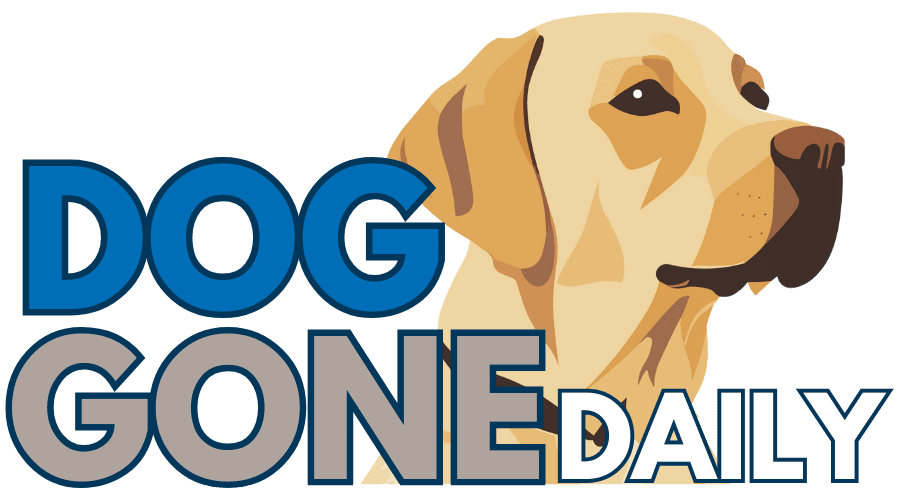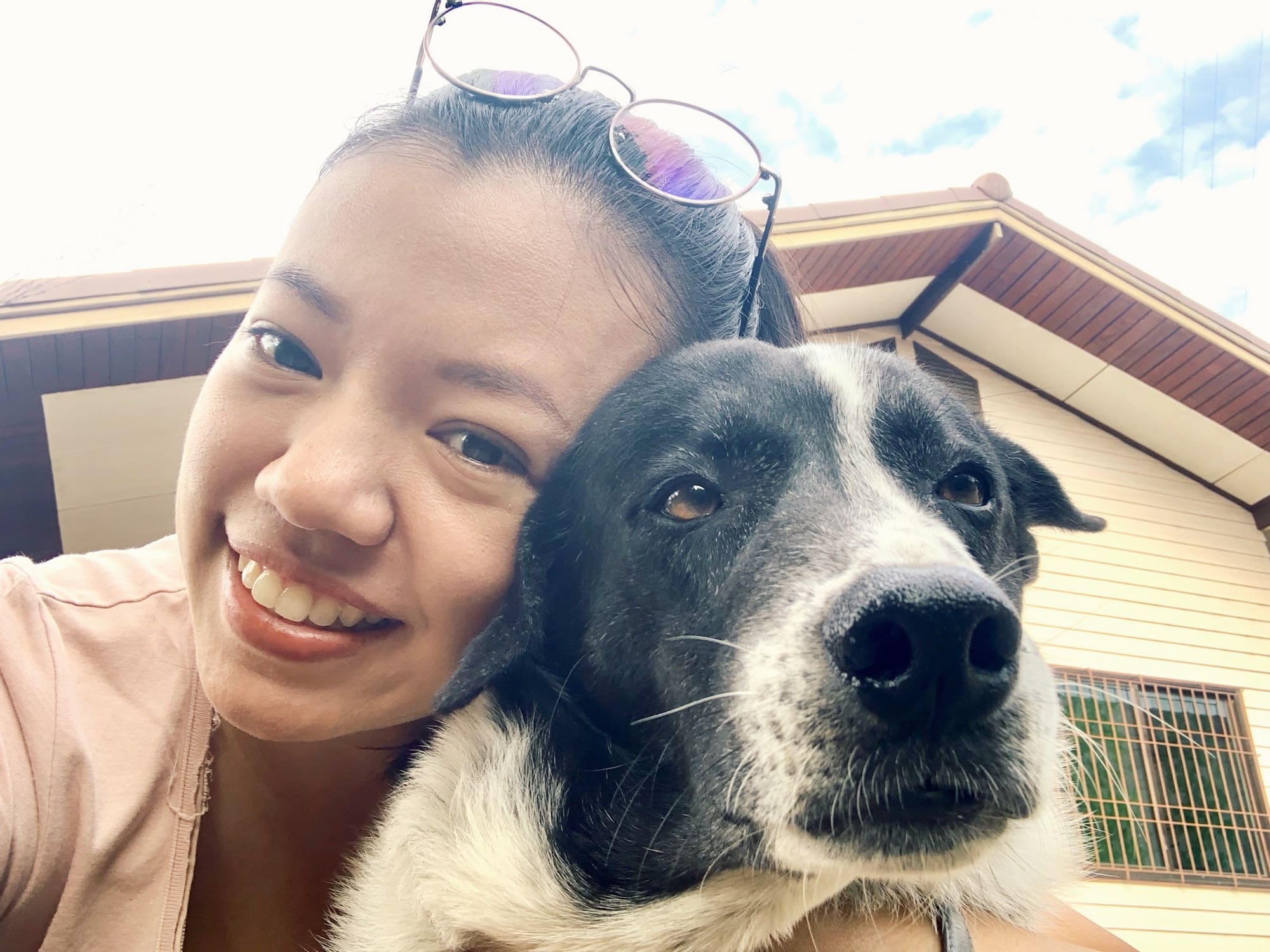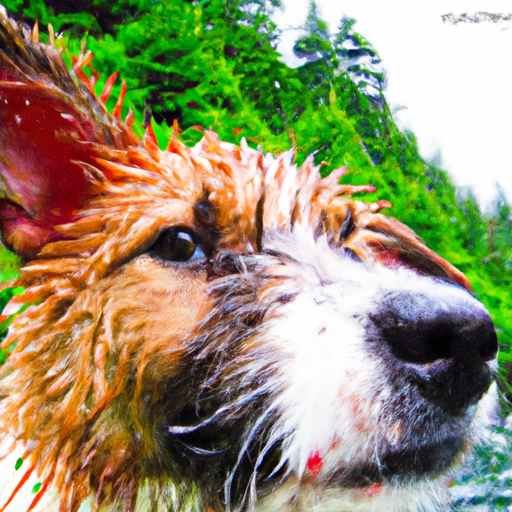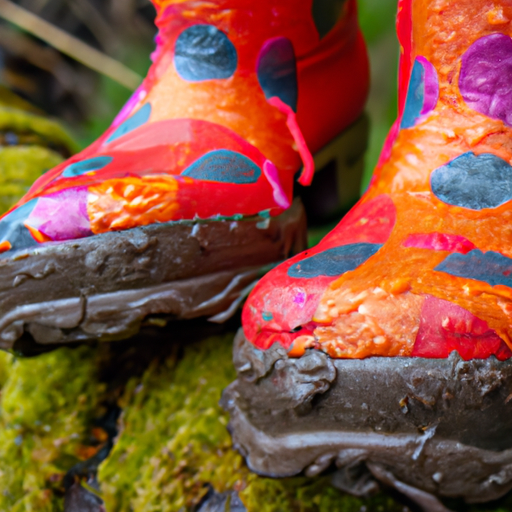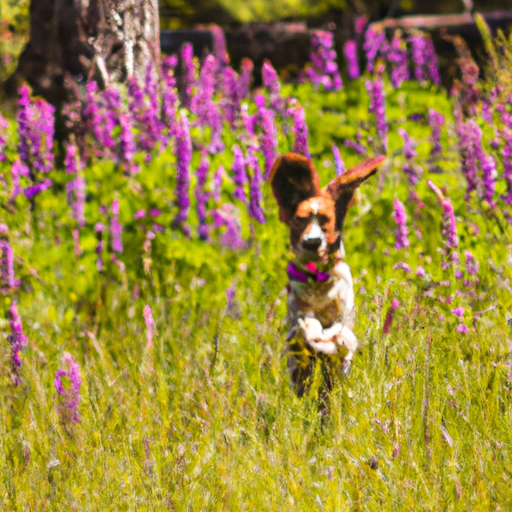As a dog owner, you understand the incredible bond that can form between you and your furry friend. But as your canine companion transitions into adulthood, it may be time to strengthen that bond even further. Building a strong connection with your adult dog not only enhances your relationship, but it also promotes their overall well-being and happiness. In this article, we will explore some simple yet effective strategies to nurture and develop a deep bond with your adult canine companion. From regular exercise and quality time to positive reinforcement and clear communication, these tips will help you forge an unbreakable connection with your four-legged best friend.
Understanding Canine Behavior
Recognizing different types of behavior
Understanding canine behavior is crucial for building a strong bond with your adult canine companion. Dogs exhibit a wide range of behaviors, including aggressive, fearful, playful, and curious behaviors. By learning to recognize and understand these different behaviors, you can better respond to your dog's needs and create a harmonious living environment.
Body language
One of the most important aspects of understanding canine behavior is deciphering a dog's body language. Dogs use their bodies to communicate their emotions and intentions. For example, a wagging tail usually indicates happiness and friendliness, while a tucked tail usually signals fear or nervousness. By paying attention to your dog's body language, you can gain valuable insights into how they are feeling and adjust your approach accordingly.
Understanding canine communication
Canine communication involves more than just body language. Dogs also communicate through vocalizations, such as barks, growls, and whines. Each vocalization carries a different meaning and serves as a form of communication between dogs and their human counterparts. By understanding and interpreting your dog's vocalizations, you can better meet their needs and address any concerns they may have.
Creating a safe environment
Providing a safe environment is crucial for your adult canine's well-being and behavior. A safe environment includes having secure fencing or leashes to prevent your dog from wandering off and getting into dangerous situations. Additionally, it is essential to remove any potential hazards from your home and yard, such as toxic plants or chemicals. By creating a safe environment, you can help your dog feel secure and prevent behavioral issues caused by stress or anxiety.
Positive Reinforcement Training
Importance of positive reinforcement
Positive reinforcement training is a powerful tool for building a strong bond with your adult canine companion. Rather than using punishment or dominance-based methods, positive reinforcement focuses on rewarding desired behaviors. By rewarding your dog for good behavior, you motivate them to repeat it and strengthen the bond between you. Positive reinforcement also helps to build trust and mutual respect, creating a positive learning experience for your dog.
Reward-based training techniques
Reward-based training techniques are the cornerstone of positive reinforcement training. These techniques involve using treats, toys, and praise to reward your dog for performing desired behaviors. For example, when teaching your dog to sit, you can give them a treat or toy as a reward when they successfully sit on command. This positive association encourages your dog to comply with your commands and enhances the bond between you.
Creating a consistent training schedule
Consistency is key when it comes to training your adult canine companion. Establishing a consistent training schedule helps your dog understand what is expected of them and reinforces positive behaviors. Set aside dedicated time each day to work on training exercises and be consistent with your commands and expectations. Consistency builds trust and reliability, enabling your dog to feel confident in their abilities and the bond you share.
Using treats and toys as rewards
Treats and toys can be powerful motivators and rewards during training sessions. When selecting treats, choose ones that are both tasty and easy to consume quickly, allowing for uninterrupted training. Toys, such as interactive puzzle toys or fetching toys, provide mental stimulation and can be used as rewards during training as well. By incorporating treats and toys into your training sessions, you make them more engaging and enjoyable for both you and your dog.
Socialization and Exposure
Introducing your adult canine to new environments
Socialization is essential for helping your adult canine companion feel comfortable and confident in various environments. Introduce your dog to new places gradually, starting with low-stress locations such as quiet parks or pet-friendly stores. Allow your dog to explore and interact with their surroundings at their own pace, providing positive reinforcement for calm behavior. Slowly increasing exposure to new environments helps your dog become more adaptable and reduces the likelihood of fear or anxiety in unfamiliar settings.
Meeting other dogs and animals
Proper socialization also involves introducing your dog to other dogs and animals. Organize controlled meetings with well-behaved, friendly dogs to allow your dog to learn appropriate social skills. Monitor their interactions closely, ensuring they remain calm and respectful towards each other. Positive experiences with other dogs and animals broaden your dog's social horizons and strengthen their social skills.
Positive experiences with people
Encourage positive experiences with people by exposing your adult canine companion to a variety of individuals. Invite friends and family members over to interact with your dog in a calm and non-threatening manner. Always ensure that positive reinforcement is used to reward your dog for calm and friendly behavior around people. By creating positive associations with different individuals, your dog will feel more comfortable and relaxed in social situations.
Gradual exposure to different situations
Gradually exposing your dog to different situations helps build their confidence and resilience. Start with mild and controlled scenarios, then gradually increase the complexity and intensity of the situations. For example, if your dog tends to be nervous around loud noises, start by exposing them to low-volume recordings and gradually increase the volume over time. Patience and positive reinforcement are key during these exposure exercises, allowing your dog to adapt and feel secure in various situations.
Exercise and Mental Stimulation
Understanding your dog's exercise needs
Regular exercise is vital for maintaining your adult canine companion's physical and mental well-being. The amount and type of exercise required can vary based on your dog's breed, age, and overall health. Some breeds may require more rigorous exercise, such as long walks or runs, while others may thrive on shorter, more intense bursts of activity. Understanding your dog's exercise needs allows you to provide them with the appropriate level of physical activity to keep them happy and healthy.
Creating a daily exercise routine
Establishing a daily exercise routine is crucial for meeting your adult canine companion's physical and mental stimulation needs. Schedule regular exercise sessions in your daily routine, ensuring they align with your dog's breed and energy level. This can include activities such as walks, runs, fetch, or swimming. By sticking to a consistent exercise routine, you provide structure and stability for your dog while strengthening the bond between you through shared activities.
Interactive toys and puzzles
Incorporate interactive toys and puzzles into your dog's daily routine to provide mental stimulation. Toys that require problem-solving skills, such as treat-dispensing toys or puzzle games, engage your dog's mind and keep them mentally stimulated. These toys can be used during quiet periods or as rewards during training sessions, adding an extra layer of enjoyment to your dog's daily activities.
Training and agility exercises
Integrating training exercises and agility drills into your dog's routine provides mental stimulation while reinforcing positive behaviors. Teaching your dog new commands and tricks through training sessions challenges their cognitive abilities and strengthens the bond between you. Additionally, agility exercises, such as obstacle courses or jumps, promote physical fitness and coordination. A mix of training and agility exercises ensures a well-rounded mental and physical workout for your adult canine companion.
Consistency and Boundaries
Establishing rules and boundaries
Establishing clear rules and boundaries is essential for building a harmonious relationship with your adult canine companion. Establish rules around acceptable behaviors, such as no jumping on furniture or no begging at the table, and consistently enforce them. Clearly communicate these boundaries to your dog through consistent training and positive reinforcement. Consistency in enforcing rules helps your dog understand what is expected of them, promoting a safe and respectful environment.
Consistent training methods
Consistency in training methods is crucial for effective communication with your adult canine companion. Use the same commands and techniques consistently, ensuring that everyone in the household is on the same page. This consistency promotes clarity and understanding for your dog, making their training sessions more effective and conducive to building a strong bond with you.
Avoiding mixed signals
Avoiding mixed signals is vital when establishing boundaries and expectations for your adult canine companion. Dogs thrive on clear and consistent communication. Sending mixed signals, such as allowing them on the couch one day and scolding them for it the next, confuses your dog and hinders their ability to understand what is expected of them. By being clear and consistent in your actions and commands, you build trust and mutual understanding with your dog.
Using a calm and assertive approach
Using a calm and assertive approach in your interactions with your adult canine companion establishes you as a confident and reliable leader. Dogs respond well to calm and assertive energy, so maintaining a composed demeanor during training and interactions helps your dog feel safe and secure. Avoid using aggression or forceful techniques, as these can damage the bond of trust between you and your canine companion.
Bonding Through Play
Engaging in interactive play sessions
Engaging in interactive play sessions is a fantastic way to strengthen the bond between you and your adult canine companion. Playtime allows for physical activity, mental stimulation, and pure enjoyment for both you and your dog. Get down on your dog's level and actively participate in play sessions, using toys and games to engage their natural prey drive and instincts. By actively playing with your dog, you create a positive association between you and fun, reinforcing the bond you share.
Choosing appropriate toys
Choosing appropriate toys for your adult canine companion is crucial for safe and enjoyable playtime. Select toys that are appropriate for your dog's size, age, and play style. For example, strong chew toys or tug-of-war ropes may be suitable for dogs with strong jaws, while plush toys are better for gentler play. Rotate toys regularly to keep playtime exciting and prevent boredom. Remember to always supervise your dog during play sessions to ensure their safety.
Teaching new commands through play
Integrating training exercises into playtime is an excellent way to teach your dog new commands and strengthen the bond between you. For example, you can incorporate a game of fetch into a training session by having your dog sit and stay before throwing the ball. This not only helps reinforce obedience but also makes training more enjoyable for your dog. By combining play and learning, you create a positive and engaging experience, fostering a deeper connection with your adult canine companion.
Building trust and confidence
Play serves as a powerful tool for building trust and confidence in your adult canine companion. By engaging in interactive play sessions, you create positive associations and strengthen the bond between you. Through play, your dog learns that you are a source of fun, affection, and safety. This trust and confidence spill over into other areas of your relationship, making your dog more receptive to training, social interactions, and overall well-being.
Health and Well-being
Regular vet check-ups
Regular veterinary check-ups are essential for maintaining your adult canine companion's health and well-being. Schedule annual wellness exams, vaccinations, and dental cleanings to ensure your dog's overall health. Regular check-ups allow your veterinarian to detect any potential health concerns early on and provide appropriate preventive care. By prioritizing your dog's health, you show them that their well-being is a top priority, strengthening the bond between you.
Proper nutrition and diet
Providing proper nutrition and a balanced diet is vital for your adult canine companion's overall well-being. Consult with your veterinarian to determine the most appropriate diet for your dog's age, breed, and specific health needs. High-quality dog food, supplemented with appropriate treats and fresh water, helps support your dog's energy levels, immune system, and overall vitality. A healthy diet contributes to a healthier, happier dog and enhances the bond between you.
Grooming and hygiene
Regular grooming and hygiene practices are necessary to keep your adult canine companion clean and comfortable. Depending on your dog's breed, grooming needs can vary significantly. Regular brushing, nail trims, and ear cleaning help maintain your dog's skin and coat health. Additionally, maintaining good dental hygiene, such as regular teeth brushing, reduces the risk of dental disease. By attending to your dog's grooming and hygiene needs, you demonstrate care and promote their overall well-being.
Providing a comfortable living space
Creating a comfortable living space for your adult canine companion is crucial for their well-being and the bond you share. Provide a designated sleeping area with a cozy bed or blanket where your dog can rest undisturbed. Ensure that the temperature and lighting in your home are suitable for your dog's comfort. Additionally, provide toys, chews, and interactive puzzles to keep your dog mentally stimulated. A comfortable living space promotes relaxation and contentment, strengthening the bond between you and your furry friend.
Effective Communication
Understanding your dog's vocalizations
Effective communication with your adult canine companion involves understanding their vocalizations. Dogs use barks, growls, whines, and other vocalizations to express their emotions, needs, and desires. For example, a sharp, continuous bark may indicate a potential threat, while a whine might suggest your dog is seeking attention or is anxious. By listening and interpreting your dog's vocalizations, you can respond appropriately and meet their needs effectively.
Using body language to communicate
Body language is a powerful means of communication for dogs. Pay close attention to your dog's body posture, facial expressions, tail position, and ear movements to understand their emotions and intentions. For example, a relaxed, loose posture usually indicates a content and comfortable dog, while a stiff, upright posture may suggest fear or aggression. Acknowledging and responding to your dog's body language strengthens the trust between you and facilitates effective communication.
Establishing clear cues and signals
Establishing clear cues and signals is essential for effective communication with your adult canine companion. Consistently use specific verbal or hand signals to convey your expectations and commands. Ensure that everyone in your household is familiar with these cues and consistently uses them. Clear and consistent communication helps your dog understand what you are asking of them, fostering a deeper understanding and stronger bond.
Listening and responding to your dog's needs
Effective communication is a two-way street. Take the time to listen and observe your adult canine companion's needs and desires. Pay attention to their cues and respond promptly and appropriately. If your dog is showing signs of stress or anxiety, provide comfort and reassurance. If they are exhibiting signs of boredom, engage them in stimulating activities. By actively listening and responding to your dog's needs, you demonstrate care and strengthen the bond of trust between you.
Patience and Understanding
Adapting to your dog's individual needs
Every adult canine companion is unique, with their own individual needs and personality. It is crucial to adapt your approach to suit your dog's specific traits. Some dogs may be more sensitive or require more time to adjust to new situations. Patience and understanding are key when adapting your expectations and training methods to best meet your dog's needs. By respecting and adapting to your dog's individuality, you foster a deeper connection and understanding.
Allowing time for adjustment
Adjusting to a new home or routine can be challenging for an adult canine companion. Allow your dog time to adjust to their new surroundings and establish a sense of familiarity. Introduce them to new experiences gradually, supporting and encouraging them every step of the way. Rushing the adjustment process can lead to stress and anxiety for your dog. By giving your dog the time they need to adapt, you build trust and a sense of security.
Recognizing signs of stress or anxiety
Recognizing signs of stress or anxiety in your adult canine companion is essential for their well-being. Common signs of stress or anxiety include panting, pacing, drooling, excessive barking, or destructive behavior. If you notice these signs, provide a calm and supportive environment for your dog. Using positive reinforcement and reassurance, help them navigate and overcome their anxieties. By recognizing and addressing stress or anxiety, you further strengthen the bond of trust and support.
Providing reassurance and support
Your adult canine companion looks to you for reassurance and support. During times of stress, change, or uncertainty, it is crucial to remain calm and provide comfort to your dog. Show understanding, patience, and empathy, and avoid punishing or scolding your dog for their reactions to challenging situations. By offering reassurance and support, you build trust and deepen your bond with your canine companion.
Building Trust and Mutual Respect
Avoiding punishment-based training
Building trust and mutual respect with your adult canine companion is best achieved through positive reinforcement-based training methods. Punishment-based training techniques, such as physical corrections or yelling, can damage the bond between you and your dog. Instead, focus on rewarding and reinforcing positive behaviors. By avoiding punishment-based training, you create a safe and trusting environment for your dog to thrive.
Building a foundation of trust
Trust is the cornerstone of a strong bond between you and your adult canine companion. Building trust is an ongoing process that requires consistency, understanding, and positive reinforcement. Be reliable in your actions and commands, consistently rewarding and positively reinforcing desired behaviors. By demonstrating trustworthiness, you nurture a strong foundation of trust in your relationship.
Respecting your dog's boundaries
Respecting your adult canine companion's boundaries is crucial for building trust and mutual respect. Pay attention to signs of discomfort or stress and adjust your approach accordingly. Avoid pushing your dog beyond their comfort zone or forcing them into situations they find distressing. By respecting their boundaries, you show understanding and consideration, fostering a deeper bond built on trust.
Fostering a positive relationship
Fostering a positive relationship with your adult canine companion involves consistently promoting positive interactions and experiences. Focus on building a bond based on love, trust, and shared activities. Spend quality time together engaging in play, training, and relaxation. By fostering a positive relationship, you enrich your lives and create a deep and lasting connection.
In conclusion, building a strong bond with your adult canine companion requires understanding their behavior, utilizing positive reinforcement training, socializing and exposing them to new experiences, providing exercise and mental stimulation, establishing consistency and boundaries, bonding through play, prioritizing health and well-being, effective communication, patience and understanding, and fostering trust and mutual respect. By incorporating these elements into your relationship, you will create a deep and meaningful bond with your adult canine companion that lasts a lifetime.
